You may have heard that carrageenan as a food additive isn’t safe.
And then you look at the ingredient list of some skin care products, and there it is.
So now you’re wondering: Is this an ingredient I should avoid? Or have the rumors concerning its safety risks been exaggerated?
Let’s start with the basics.
What is Carrageenan?
We typically find carrageenan in foods like yogurt, salad dressing, pudding, ice cream, chocolate milk, infant formula, sauces, and other food items that are smooth and consistent.
Carrageenan is extracted from red seaweed (Chondrus crispus), which is commonly called Irish moss. The ingredient isn’t exactly Irish moss, though. Rather, it’s an extract from the plant, an isolated polysaccharide that’s used as a thickener and emulsifier in foods. Add carrageenan to something and you improve the texture and help the ingredients mix together more smoothly.
“Spoon-hugging” texture? Carrageenan helps with that. It also helps keep oil and water-soluble ingredients from separating, keeping the overall product more stable. This is why it’s often used in salad dressings and sandwich spreads that include both oil and water-soluble ingredients.
It’s no wonder, then, that the ingredient would also be used in skin care products to give them a smooth, creamy texture.
Carrageenan is also a water-binding agent, which means it helps hold water onto the skin and hair, increasing hydration. You’re likely to find it in products like moisturizers, shampoos, conditioners, and toothpastes.
How is Carrageenan Processed?
Carrageenan may be processed in one of two ways:
Refined: The raw materials are cooked in an alkaline solution. The solid parts are then filtered out. The remaining solution contains the carrageenan, which is then concentrated, removed from the solution, and dried.
Semi-refined: The raw materials are cooked in an alkaline solution that contains potassium hydroxide. This prevents the carrageenan from dissolving in the solution, so that when the algae are removed, what is left is carrageenan and cellulose, which is ground into a powder.
Is Carrageenan Safe?
The concerns about carrageenan involve mostly “degraded” carrageenan, which is not used in food or cosmetics. Degraded carrageenan is made in a lab by taking food-grade carrageenan and hydrolyzing it—breaking the bonds and making the molecules smaller.
Degraded carrageenan was created in the 1960s. At that time, doctors often recommended carrageenan for to treat peptic ulcers. But the concentration you needed in order for it to be effective was thick and unpleasant to consume, so researchers degraded it to make it easier to take.
They soon found that this wasn’t a good solution, and that degraded carrageenan was harmful. It’s thus no longer used to treat peptic ulcers.
The concern about carrageenan came up again in the early 2000s in relation to research by Joanne K. Tobacman, M.D. She published a study review in 2001 that showed a connection between exposure to degraded carrageenan and stomach ulcers and tumors in mice. Degraded carrageenan was also related to inflammation and other problems in colon cells.
Tobacman also expressed concern about food-grade carrageenan, noting that some of her research found it was also associated with intestinal ulcers. She gave the following reasons for this finding:
- The food-grade carrageenan could be contaminated with degraded carrageenan.
- Digestive processes and intestinal bacteria could interact with it in such a way as to result in degradation and subsequent intestinal inflammation. We have no evidence that this happens in living organisms, however. Tobacman draws these conclusions from laboratory studies that simulate gastric acid effects on carrageenan.
The animal studies referenced by Tobacman also involved levels of carrageenan that made up between 2.5 and 15 percent of the rats’ total diet, whereas the carrageenan in human diets make up a much smaller fraction.
In 2008, Tobacman filed a petition with the FDA urging them to reconsider the safety of the ingredient. The FDA disagreed with her findings, and maintains that carrageenan is safe. Some scientists have also argued that animals have very different intestinal symptoms than humans, and that we can’t draw conclusions without human studies—particularly when degraded and food-grade carrageenan are so different.
What About Carrageenan in Skin Care?
Though the above results are concerning, they are:
- Limited.
- Shown only in animal studies (not human).
- Come from one main researcher.
We also have to remember that these are just a few concerning animal studies stacked up against countless other studies showing carrageenan to be safe. Authorities in the U.S., Europe, China, Japan, Brazil, and more find the ingredient safe for use in food.
Customers with gastrointestinal sensitivities may choose to avoid carrageenan in their diets. But do we need to be concerned about this ingredient in skin care products?
Remember that cosmetic companies are allowed to use only food-grade carrageenan in their products—degraded carrageenan isn’t allowed.
Further, carrageenan is too large a molecule to be absorbed through the skin, so you don’t have to worry about it getting into your bloodstream and affecting your gut.
Meanwhile, carrageenan may actually prove beneficial to skin in several ways. In addition to its hydrating properties, it’s also been found in some studies to block the growth of viruses like human papillomavirus, making it potentially even more protective in sexual lubricants (in which it’s already included).
The Environmental Working Group gives the ingredient a safe, low-hazard rating of “1” on its Skin Deep Database, and the European Cosmetics Directive permits it for use in cosmetics. And in 2014, The Joint Expert Committee on Food Additives (JECFA)—which advises the World Health Organization (WHO)—after completing an in-depth review of the science related to the safety of carrageenan, found it safe for use in food, including infant formula.
If it’s considered safe even for infants to consume, we don’t think you have to worry about it in skin care products.
What do you think of carrageenan? Were you worried about it in skin care products?
Sources:
Cornucopia Institute – Carrageenan: How a ‘Natural” Food Additive is Making Us Sick
PLOS Pathology – Carrageenan Is a Potent Inhibitor of Papillomavirus Infection
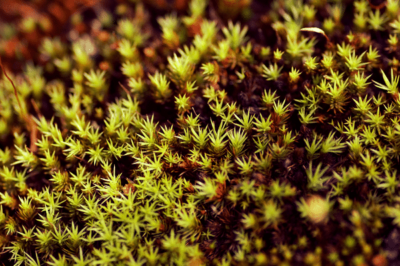

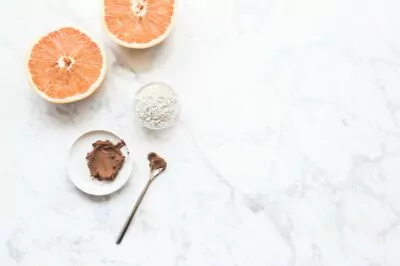
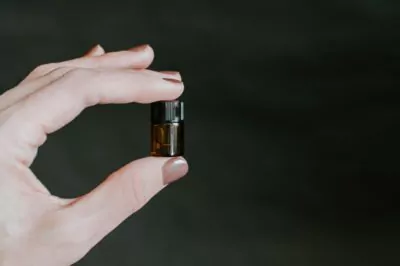
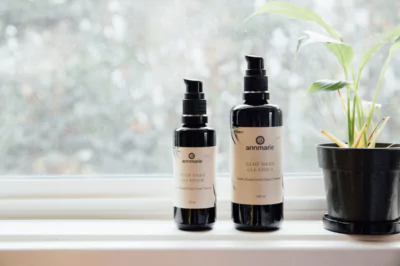

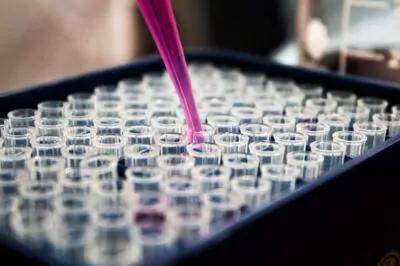

I am very allergic to carrageenan, even in the smallest amounts. After consuming it, I am immediately sick, and the skin on my fingers begins to shed away in sheets. After prolonged exposure, I break out in scaly rashes all over my body. For years I was sick and tried all kinds of diets (no dairy, no wheat, etc) but I couldn’t isolate the cause until my brother figured it out (he is also allergic). I worry the damage it may have done to my skin and digestive system. I worry for people with chronic digestive issues who may have this allergy and not know it. I wish further testing would be done, and would gladly be part of the study if it meant the dangers of carrageenan could be better understood, and perhaps have the ingredient removed from our food and cosmetics.
The difficulty is that the ingredient is not always listed. The product may simply contain cream, but not expand to say that the cream was enhanced with carrageenan. If nothing else, I wish labels were required to list when carrageenan is present. I’m finding it extremely difficult to avoid consuming carrageenan even when diligently reading the labels 🙁
I am concerned about this ingredient and hope that you will find an alternative so that I can keep using your products.
How would one know if the carageenan used in a skin care product was degraded or not?
Hi Deb,
The best way to know is to reach out to the company and they should be able to tell you a bit about their carrageenan (or any other ingredient that you ask about)!
I missed where you say whether your products contain the degraded form. I will recheck the article. But please address. Also, could you tell us which of your products contain it so we don’t have to search each one? Thank you.
Hydranov: Water (agua), Phenoxyethanol (conservante 1%), Sodium Carrageenan y Sea salt (sal marina)
1 Aplicarion of Hydranov = 14 aplication of Hyaluronic Ácido
Carrageenan is very good for the skin.
Hello
Thank you for the info on Carageenan. Though it’s in your Annamarie product “Citrus Stem Cell Serum” –
I subscribe to a magazine named “Simply Gluten Free” and they had a skin products article and listed Carageenan as one product that should not be used by those sensitive to gluten or if they are celiacs. Products on the skin can be absorbed and they do affect our entire system.
I am gluten sensitive.
I would like to return the Citrus Stem Cell Serum, due to its ingredient Carageenan. Will this be possible? Please send instructions on how to get my money back. Thank you.
Finally, please re-formulate your Carageenan containing products, that would be helpful for those like me, as well as good PR for your company.
Thank you.
I am 80 years old and was a copy editor and proofreader for 30 years. I still read a lot and have been concerned about health all my life. Someone there needs to do more research about carrageenan. It causes cancer! I read all labels on foods. One company that puts out cartooned non-dairy milk puts a label right on the front of its package that says “NO CARRAGEENAN.” Why do you think they do that? Since I am a breast cancer patient, I refuse to buy this brand of cartooned milk!
I have heard repeated over and over that Dr Tobacman’s research involved ‘degraded’ carrageenan – that’s simply untrue. Did anyone actually read the paper? She compared the results of BOTH degraded and un-degraded carrageenan. Secondly, it was a REVIEW paper of at least 50 studies – with very uniform results, the animals really suffered. Those studies represent at least 150 different well informed scientists. Many of the “countless other studies” you referred to were industry-sponsored, according to an UN FAO report available online ” Production and utilization of products from commercial seaweeds”. And my question is, for an ingredient so ubiquitous in the food supply but with such severely negative results in animal studies, Why aren’t there any Human Studies?? When estrogen became of concern, there were massive nationwide studies conducted – why not on this food ingredient which is used by both women and men?
Also, the difference between ‘degraded’ and ‘un-degraded’ is simply pH. Carrageenan is stable in neutral through basic conditions, in acidic conditions in breaks down and is ‘degraded’. Just mix it with a little household acid, such as vinegar or lemon juice.
Carrageenan is a very large molecule and unlikely to absorb through the skin. However, it is a remarkably ‘sulfated’ molecule. A whole class of antibiotics depends on this very property. Many people are allergic to ‘sulfa’ drugs and there is the issue of antibiotic resistance. In the pharmaceutical research, carrageenan has repeatedly displayed powerful anti-tumor, anti-viral activity – which I think is fantastic. But, for this reason, it may not be advisable to use it on a daily basis – just as you would not use antibiotics daily.
Personally, I would not eat anything with carrageenan in it. I would use cosmetics containing it, but not on a daily basis. And I am very eagerly looking forward to the full exploitation of carrageenan’s very unique properties within medicine.
While I generally agree that the endorsement of the FDA & USDA don’t always carry a lot weight with me, the European endorsement DOES. They seem to have stricter guidelines for food additives and alternative approaches to health (vs. managing a primarily sick-care system).
Not convinced by anything recommended by the FDA or USDA – both corporately owned.
Several good researchers like Food Babe, Vani Hari, Ray Peat, PhD, Dr. Mercola have written about carrageenan being highly inflammatory, and used to cause inflammation to test anti-inflammatories. I don’t want it in anything I eat or use on my skin. There are plenty of healthy options.
I don’t know the other researchers you named, but Dr. Mercola is wrong about quite a lot. There are some articles of his I find helpful, such as explaining naturally occurring MSG vs. added MSG, but overall he is not a reliable source for the best nor latest in health and nutritional science and has even given potentially dangerous advice in recommending some things that the best science has discovered is very harmful to us. I recommend Dr. Michael Greger for legitimate science on nutritional health. Unlike Mercola, Dr. Greger’s website nutritionfacts.org is completely non-profit.
All that I’ve read here aligns with the research I personally decided to do on carageenan upon first learning about its potential to cause harm a few years ago. I’m extremely cautious, but the research shows that carageenan isn’t something harmful unless in its degraded form, so even I don’t worry about it in the occasional treat.
Basically I came here just to make sure that it was the safe form (non-degraded) that they used in their ingredients and I found their article very helpful, informative and I feel good about the ingredient.